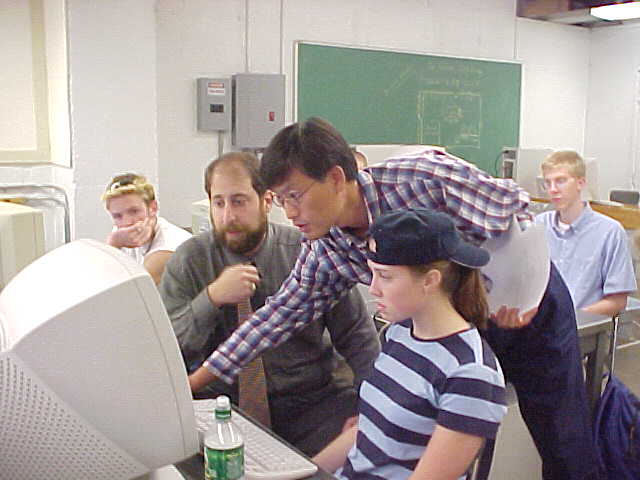| ACCOMMODATIONS and SKILL IMPROVEMENT |

picture: uhaweb.hartford.edu
|
 picture: uhaweb.hartford.edu |
Links: |
The following accommodations may help a student with VMI (and dysgraphia) to progress; some are more likely to be needed in cases of severe VMI (where relevant, these accommodations can also be beneficial to a worker): *** Extended time on tests *** Extended time on assignments *** Alternative-site testing (for example, in a Resource classroom) *** Written instructions *** Peer (or "buddy") notes *** Teacher lecture/board notes when available *** Bullet-point format instead of essay format when writing is not being assessed *** Use of a calculator *** Answer only in science or math class calculations assignments and assessments *** Use of graph paper for science or math class calculations *** Oral assessment whenever possible *** Use of specialized pens and pencils; pencil grips (large wide ones, not simple slip-grips) *** Use of a slant board *** Use of word processor (mobile unit or classroom stationary unit with software installed) *** Use of a computer with voice-recognition technology installed (at school and/or home) *** Use of computer hardware accessories, such as large keyboards and trackball mice *** Use of a handheld scanner and/or portable scanner ++++++++++===============++++++++++===============++++++++++========== There are some strategies that may help people with VMI improve their visual-motor processing skills. The following applies to elementary school students and was provided by Dr. Ed Emling and Dr. Brittany Stevens: 1. Provide chalk, crayons, or felt tipped pens to make large drawings on a chalk board, large sheets of paper or even sheets of newspaper. 2. Work with him/her in attempting to do simple puzzles in the beginning. (300 pieces) 3. Make simple stencils for him/her to use. Encourage him/her to draw around the inside of each stencil. Have him/her design his own stencils that can be cut out and then used for tracing. 4. Encourage him/her to copy simple designs such as a circle, triangle, square rectangle, square within a square and other creative geometric shapes. Have him/her expand the variety of shapes that are designed. 5. Provide him/her with a wide paintbrush and a can of water. Then paint on the sidewalk large numbers, letters, shapes, animals or other various pictures. 6. Classification. Have child group or classify geometric shapes of varying sizes and colors. Take a box of assorted screws nuts and bolts, etc. from the garage and group and sort the pieces. 7. Rubber-band designs. Have him/her copy geometric configurations with colored rubber bands stretched between rows of nails on a board. 8. Worksheet. Ditto sheets, either purchased or teacher made, can be used for a variety of tasks. Some workbooks can be purchased for this type of activity. 9. Dominoes. The child could make his/her own dominoes using various materials or pictures for the end pieces. 10. Playing cards. A deck of playing cards provides excellent teaching material to match suits, pictures, numbers, and sets. |